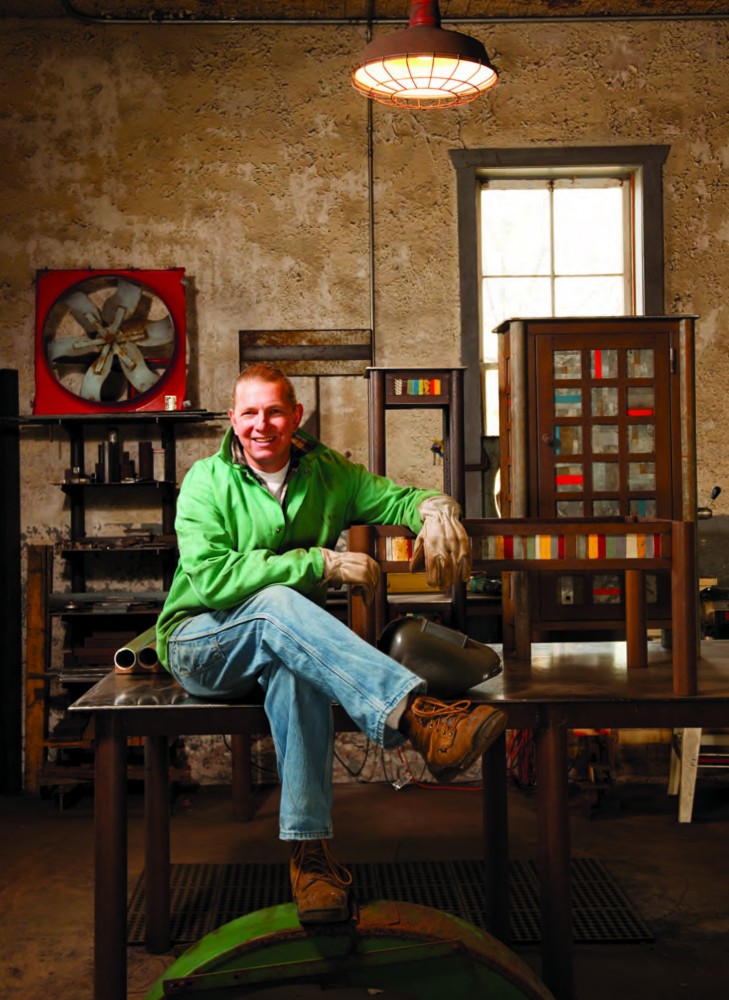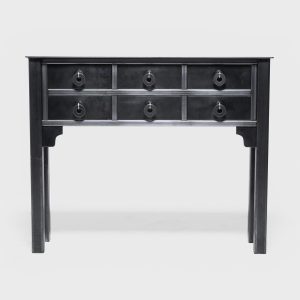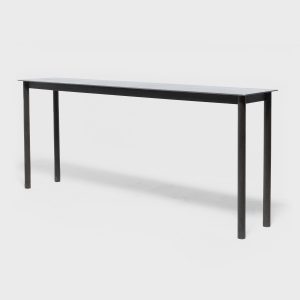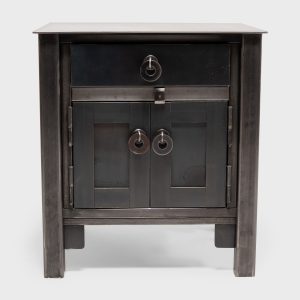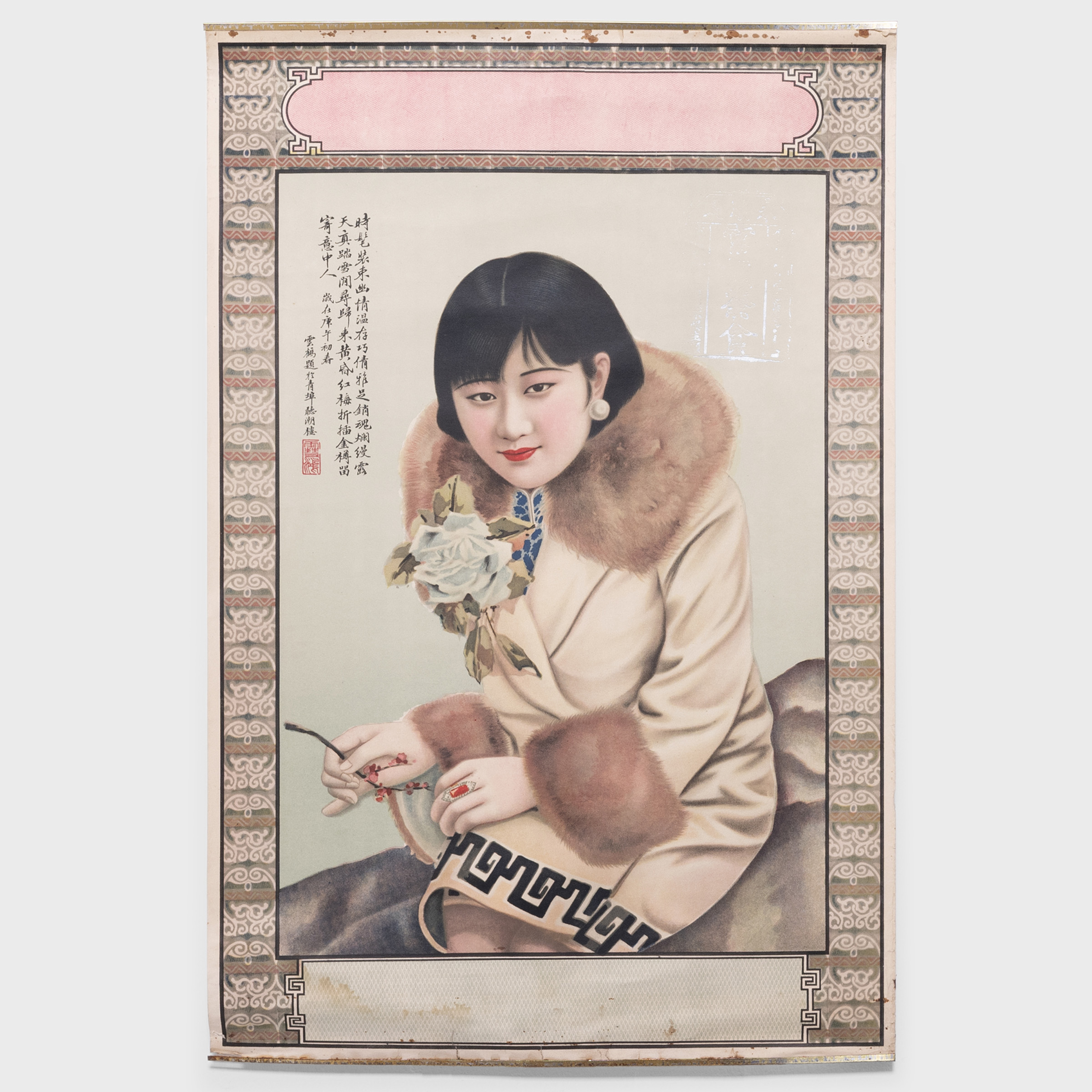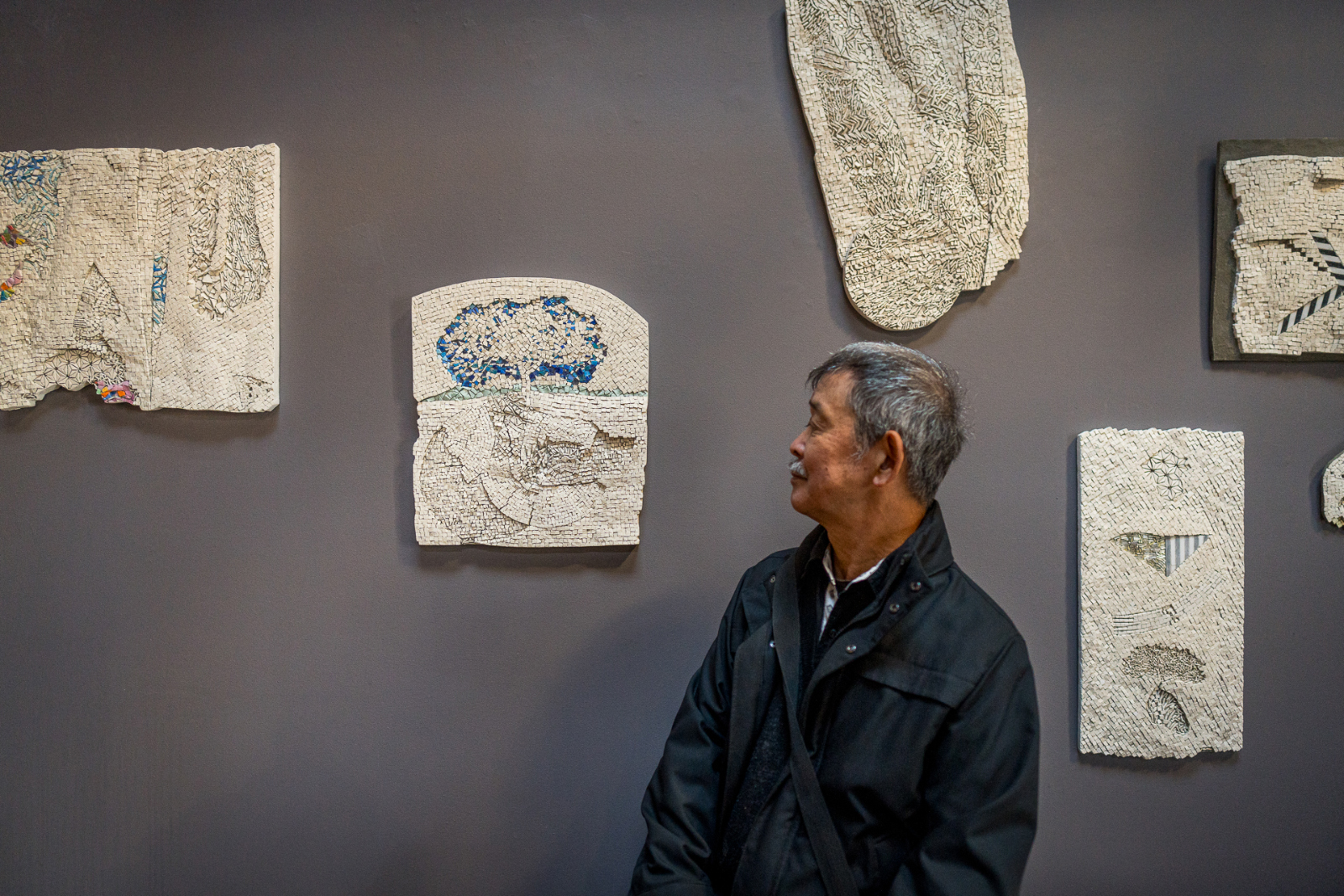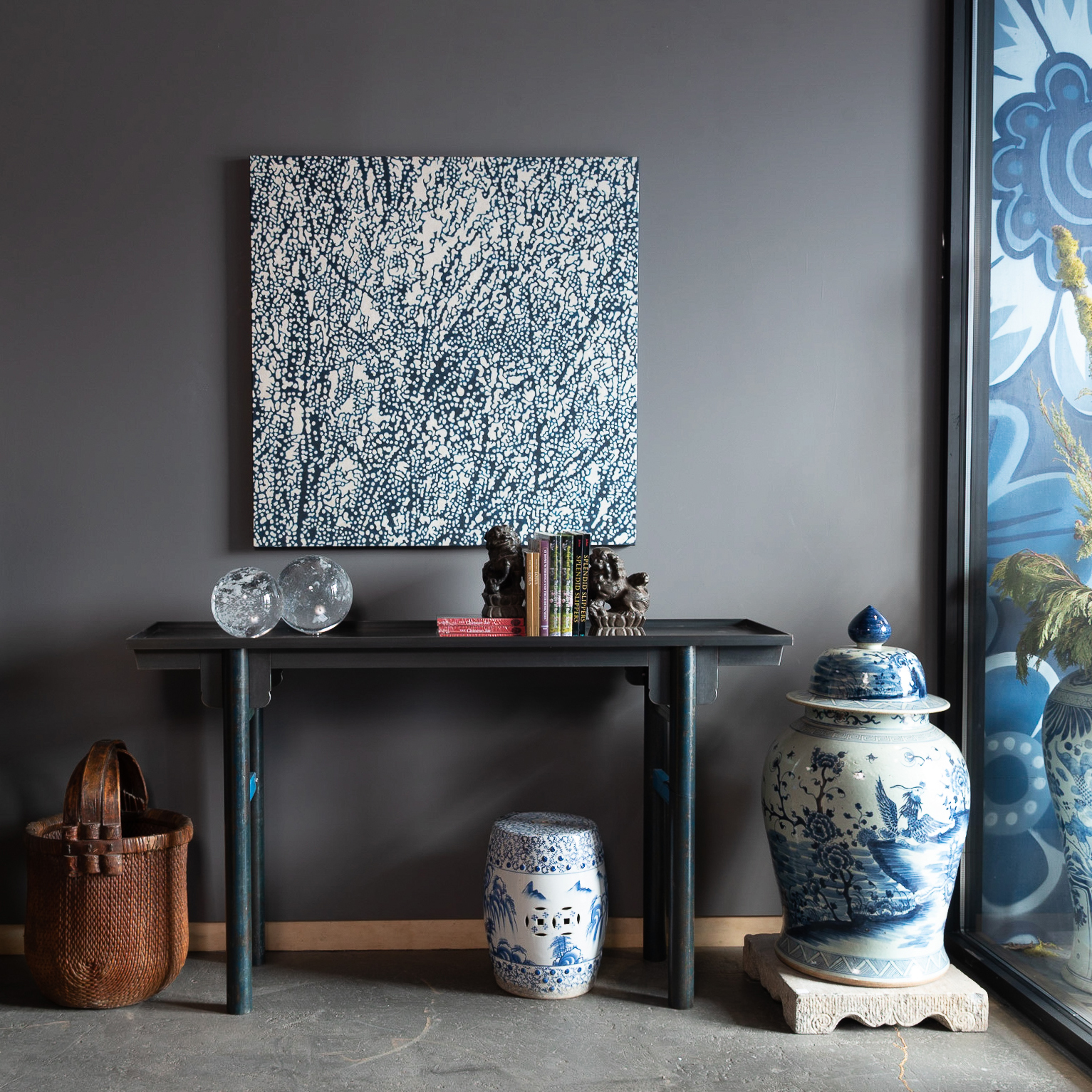
Jim Rose’s Timeless Artistic Legacy
Jim Rose spent his artistic life cultivating the mind of a maker. He absorbed the practices of Ming and Shaker furniture makers, not just through study, but through the physical creation of objects that carry their influence. Instead of traditional carved wood, he used hot-rolled and reclaimed steel — coaxing the material into clean-lined forms. PAGODA RED is honored to have represented Jim and his work for over 25 years and are deeply saddened by his passing.
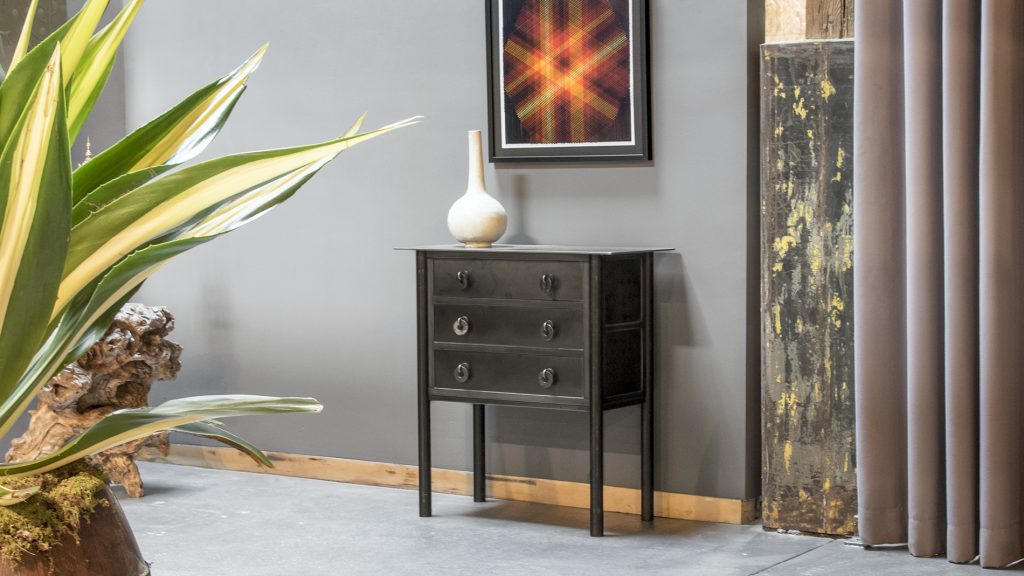
Three Drawer Table by Jim Rose at PAGODA RED
His workshop was a century-old Wisconsin brick building that was once a creamery, where sheets of hot-rolled and Corten steel leaned against the walls. Using a steel shear, he cut a series of shapes — rectangular table tops, cylindrical legs, thin stretchers, and the occasional rounded ornament. He then welded them together into archetypal forms that would feel equally at home in a modern apartment or a historic home.
Ahead of his featured collaboration with us for his Ming Steel Collection, Jim offered that he’d,
“… always been interested in a lot of different types of furniture. Shaker, Arts and Crafts, Bauhaus, and Chinese pieces are all in the mix. For the Ming Steel Collection, I’ve been looking at a lot of books, but I’ve also walked through the PAGODA RED warehouse, studying and measuring pieces.”
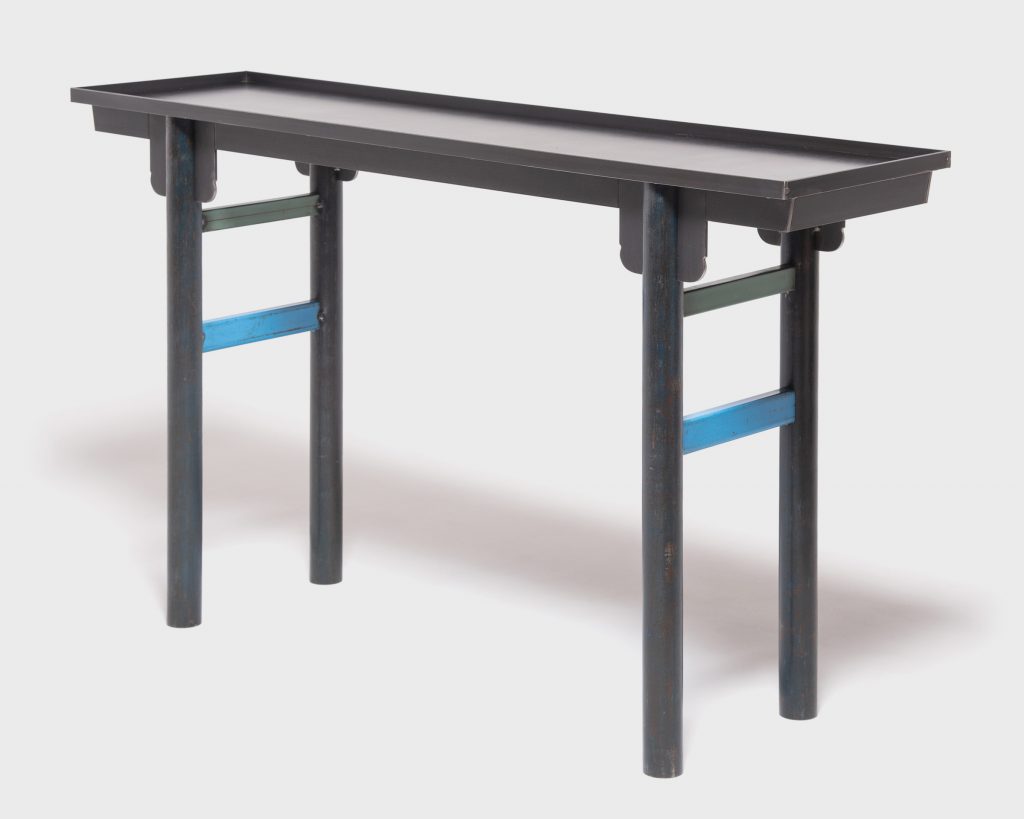
Hot-rolled steel and reclaimed blue stretchers marry ancient forms and modern materials in a Ming Shanxi Table.
Color was inherent to the material in Jim’s furniture: the cool blue-gray of hot-rolled steel, the warm patina of aged Corten, the occasional red ringed drawer-pull sourced from old painted railroad washers. Jim finished each piece with a Minwax paste, protecting it without detracting from the material’s essential nature.
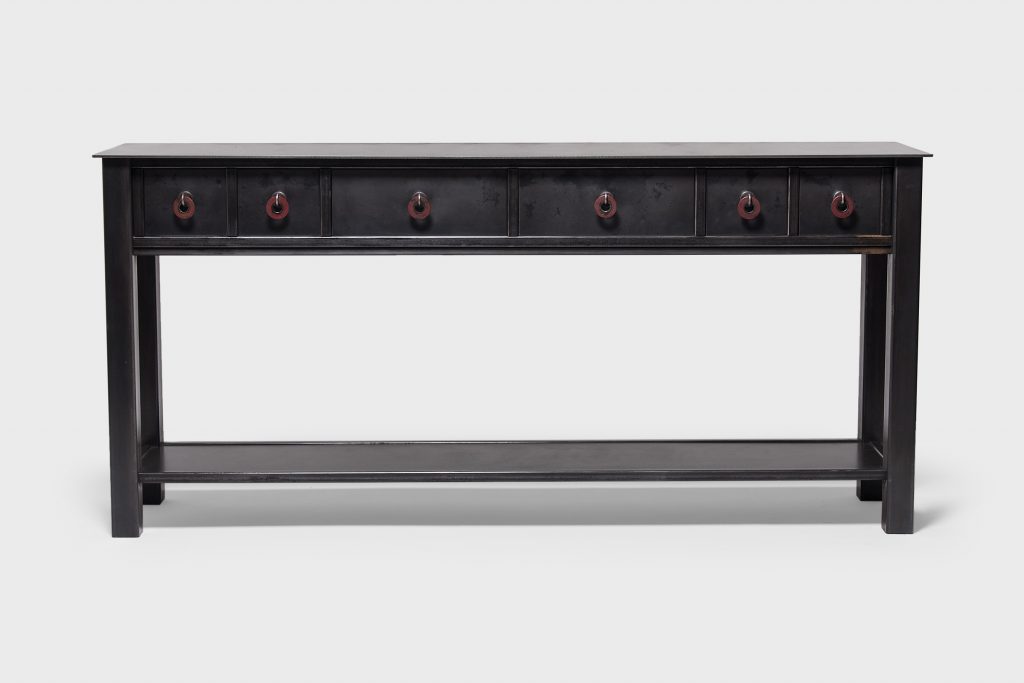
Railroad tie washers become drawer pulls on this Console Table, honoring Chinese laborers who built the railroads.
From the beginning, when he was a student at the Art Institute of Chicago, Jim worked with scrap materials. It was a practical decision that would instill his work with a timeworn spirit for years to come.
“I was doing a lot of silver and bronze casting,” Jim told us, “and I had to find an affordable material, so I started sourcing from a scrapyard. Happily, it was a sustainable choice — I didn’t have to use harsh chemicals, and the steel was already aged by the environment.”
In steel, his furniture brings the past into the present. The material is contemporary, but the shapes stretch back to the austere, self-sufficient Shaker furniture of the 1800s and further afield to the simple but superbly crafted pieces of China’s Ming Dynasty (1368-1644).
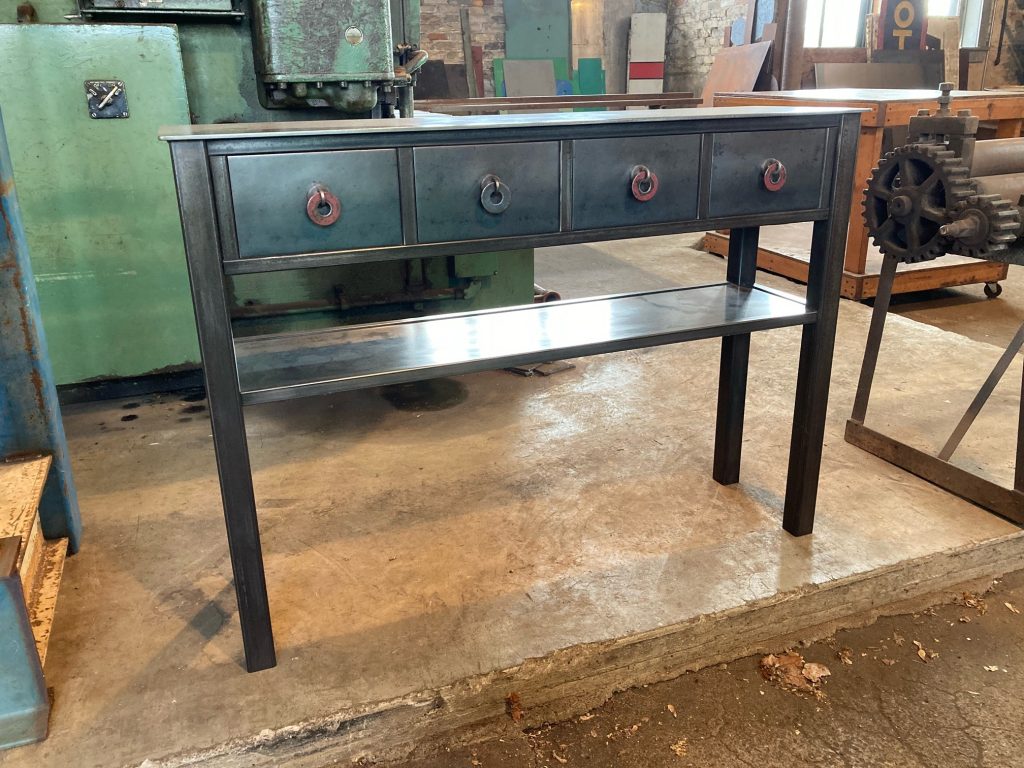
A Ming-inspired console table takes shape in Jim Rose’s workshop, a 100-year-old former creamery in Wisconsin.
Longevity played a significant role in his work. Each piece was crafted from materials that will last well into the future. In conversations that circle between continents and time periods, the furniture easily adapts to any space. For Jim, the idea of endurance was less about the furniture itself and more about the people who use it.
“I feel like I have an obligation to the people who collect my work that it increases in value,” he says. “It should become more collectible over time.”
Many pieces have found permanent homes in museums — from the Smithsonian, to New York’s Museum of Arts and Design, to the Milwaukee Art Museum — where they sit among the objects that influenced them. Private collections also prosper, as many people acquire companion pieces over time. An individual collector might own as many as twenty Jim Rose pieces.
Once, while visiting the Carnegie Museum of Art in Pittsburgh, Jim was surprised to encounter an early piece called Chinese Coins, which a collector had donated to the institution. “There it was, sitting on the museum floor,” he recalls. “It was a piece from a series of quilt cupboards I made.” In an American center of industrial steel, Chinese and Shaker influences met — a fitting metaphor for all that converges in a Jim Rose piece.
Per his family, donations in Jim’s honor can be made to CERF+ The Artist’s Safety Net, an organization he supported throughout his career.

Explore More
- Jim Rose Offering Table
- Jim Rose Altar Table
- Jim Rose Steel Chest
